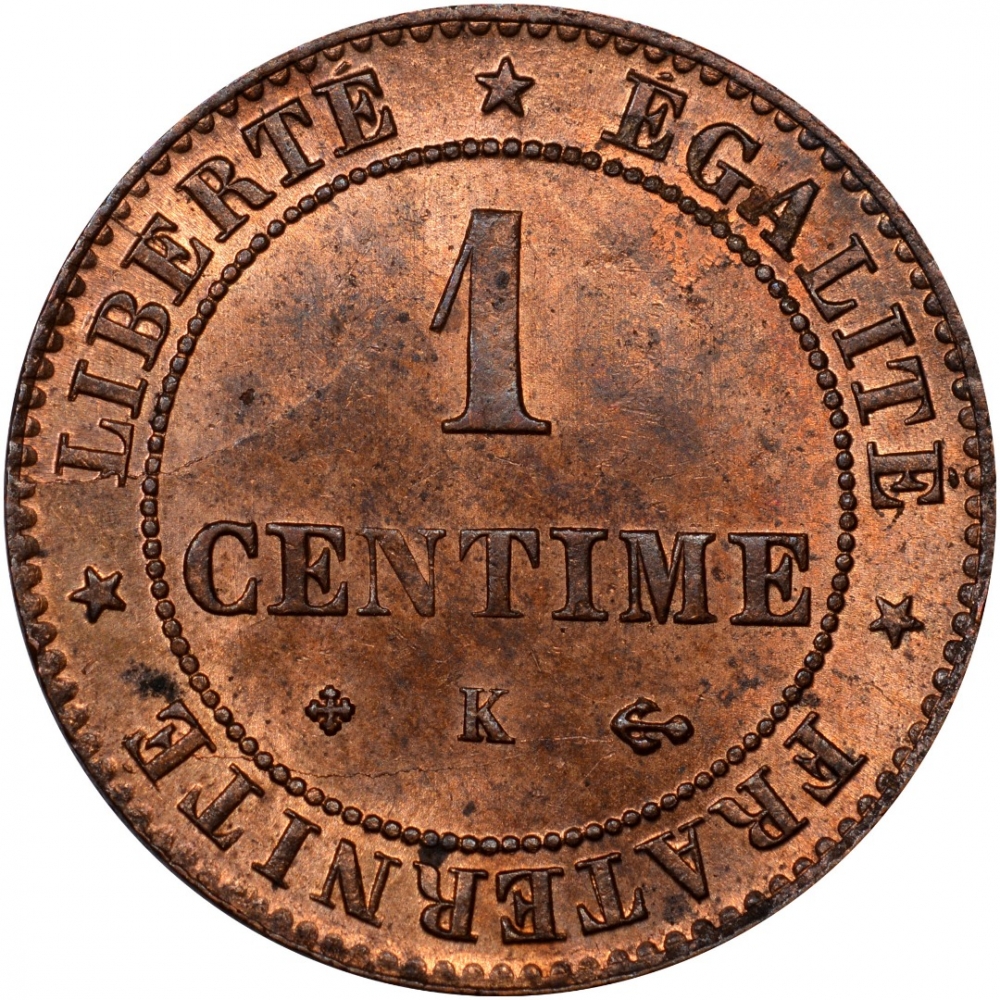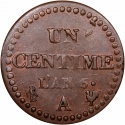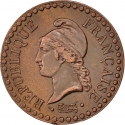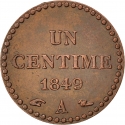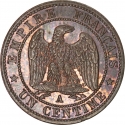You are about to finish your registration. Please check your mailbox (including spam folder). There should be a letter with a confirmation link. Check setting to make sure that your e-mail address is correct.
Send letter againDescription
The French Third Republic was the system of government adopted in France from 1870 when the Second French Empire collapsed during the Franco-Prussian War until 1940 when France's defeat by Nazi Germany in World War II led to the formation of the Vichy government in France.
Engraver: Eugène-André Oudiné
Obverse

|
Depicts a laureate head of Ceres to the left, wearing a pearl necklace, a double bun and a composite crown of wheat, flowers, olive, oak and acorns, knotted with a ribbon descending on the neck and passing over the forehead where the word CONCOR is inscribed. Everything within a beaded circle. Date below, between stars, country name above. RÉPUBLIQUE FRANÇAISE |
|---|---|
Reverse

|
Denomination with the mintmark below, within beaded circle, surrounded by the national motto of France (Liberty, Equality, Fraternity). The mintmark is between privy marks of the Engraver General and the Mint Director. ★ LIBERTÉ ★ ÉGALITÉ ★ FRATERNITÉ |
| Edge |

